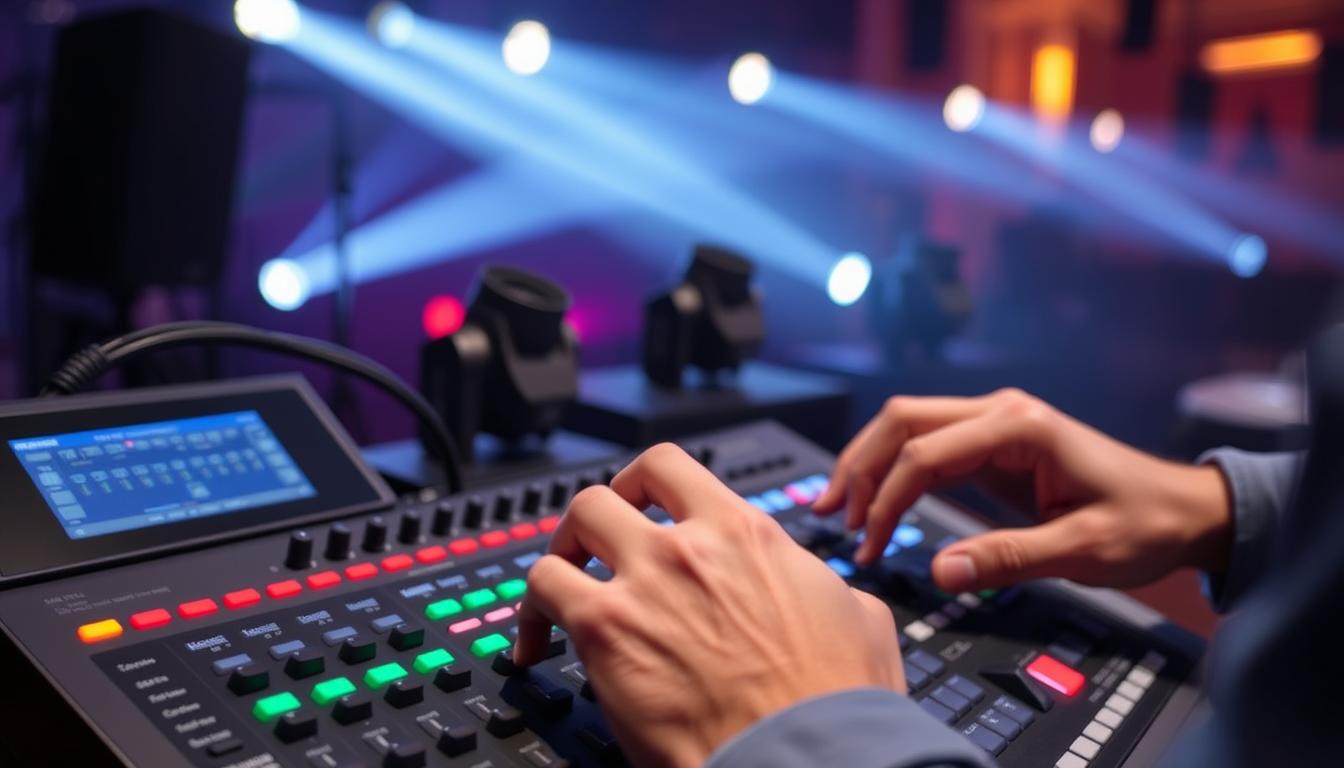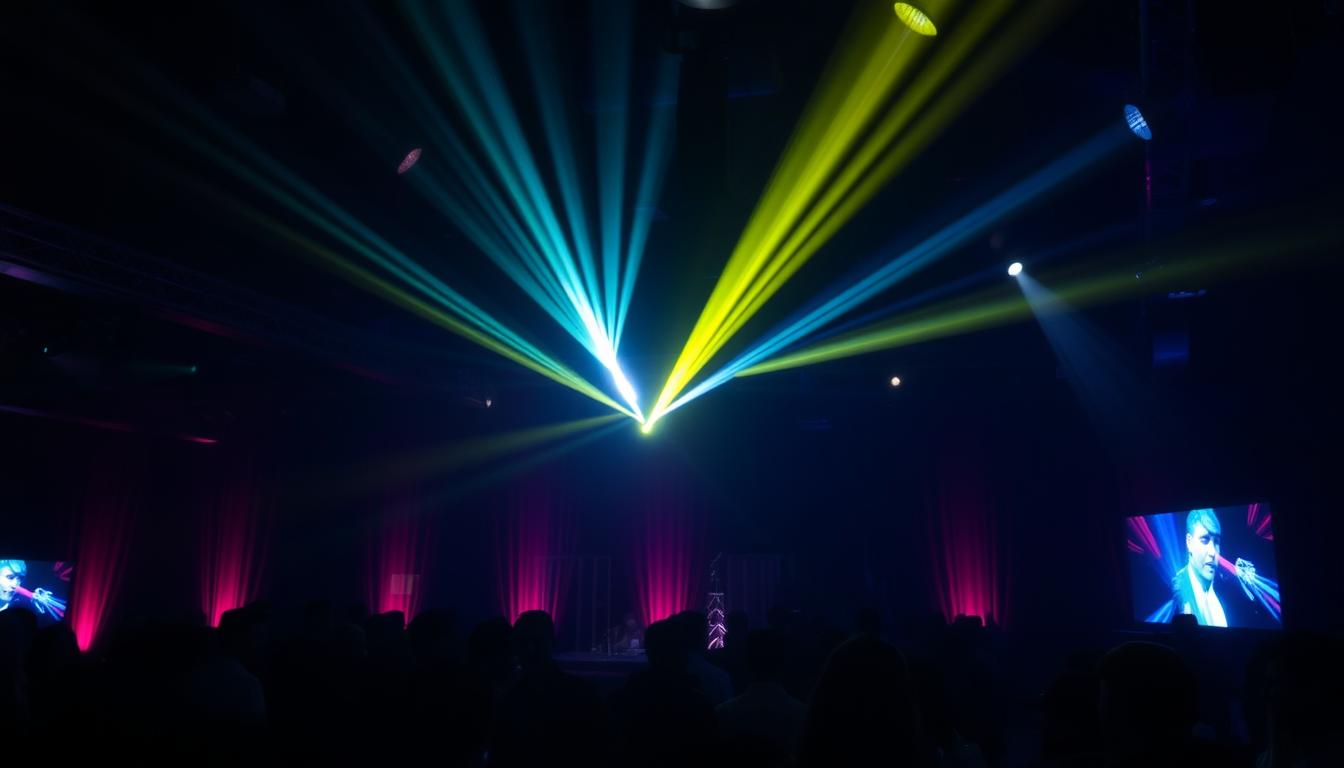
How to Choose the Best Moving Head Beam Light for Events
, by Joe Choi, 14 min reading time

, by Joe Choi, 14 min reading time
Choosing the best moving head beam light depends on your event size, venue characteristics, desired effects, and budget constraints. As someone who's helped outfit hundreds of stages, I've seen how the right lighting transforms an ordinary event into an unforgettable experience—and how the wrong choice can lead to headaches and disappointment. In this guide, you'll learn the essential specs to check, common mistakes to avoid, and get my practical recommendations based on 15+ years in the stage lighting industry.

Let's be honest—lighting equipment isn't cheap, and making the wrong choice can be costly in more ways than one. The right moving head beam light doesn't just create stunning visual effects; it ensures your event runs smoothly, safely, and efficiently.
The difference between amateur and professional-looking events often comes down to lighting. Moving head beam lights create those dramatic, sharp beams that cut through haze and transform any venue.
Modern LED moving head lights consume significantly less power than older models while delivering better performance—saving you money on operating costs for longer events.
Quality moving head lights include thermal protection, proper mounting hardware, and reliable components that won't fail mid-event—when you need them most.

The beam angle determines how wide or narrow your light beam will be. For moving head beam lights specifically, you'll typically want a tighter beam (2-5°) for those dramatic, laser-like effects that cut through the air. Understanding the difference between a spot vs. a beam light is crucial here. Brightness, often related to wattage, is another key factor; our guide on choosing the right wattage can help you decide.

"For small venues with low ceilings (under 12 feet), avoid super-bright fixtures with narrow beams—they'll overwhelm the space and blind your guests. Instead, opt for fixtures with adjustable brightness and wider beam options."
The pan and tilt capabilities determine how much movement your light can achieve. Most professional moving head beam lights offer 540° pan and 270° tilt, but some high-end models provide 630° pan or even infinite rotation for more dynamic effects.

How you'll control your lights is crucial, especially for complex events. Most professional moving head beam lights use DMX protocol, but the number of channels can vary from 8 to 24+, affecting how much control you have over individual features.

Moving head lights contain precision motors and optical components that need to withstand frequent movement and transportation. Investing in reputable brands often pays off in reliability and longevity.
"I've seen too many event companies buy cheap moving heads only to replace them after a few gigs. Quality fixtures from brands like Chauvet, ADJ, Elation, and Martin might cost more upfront but will serve you reliably for years."

Moving head beam lights range from $100 budget models to $5,000+ professional fixtures. Understanding the real-world trade-offs helps you make smart investments.
| Price Range | Best For | Typical Features | Limitations |
|---|---|---|---|
| $100-300 | Small parties, DJ setups | Basic movement, limited colors | Noisy, limited brightness, shorter lifespan |
| $300-800 | Small venues, bands, mobile DJs | Better optics, more colors, gobos | Limited beam definition, moderate brightness |
| $800-2000 | Professional events, mid-size venues | Sharp beams, multiple prisms, fast movement | Higher power requirements, heavier weight |
| $2000+ | Concerts, large productions | Extreme brightness, precision optics, weatherproofing | Requires experienced operators, significant investment |

Using too many high-powered beam lights in a small venue creates an overwhelming, uncomfortable experience. For intimate spaces under 1,500 square feet, 2-4 moving heads is typically sufficient.
Never debut new lighting equipment at a paid event! Always test your moving head beam lights beforehand to ensure they're properly programmed and functioning correctly.
Many buyers focus on light specs but forget about power requirements, mounting options, and transport considerations. A 50-pound fixture might look great but be impractical for your mobile setup.
Moving head beam lights use motors that generate noise—ranging from a quiet hum to a noticeable whir. For corporate events, weddings, or theater productions where silence matters, look for fixtures specifically designed for quiet operation or plan your placement carefully.



"After 15 years in this industry, I've learned that it's not just about buying the most expensive gear—it's about choosing the right tools for your specific needs and knowing how to use them effectively."
Always test your beam patterns and programs at least 48 hours before your event. This gives you time to troubleshoot any issues or make programming adjustments.
Beam lights need something to reflect off of to be visible. A quality haze machine (not smoke!) will make your beams pop without creating a cloudy environment.
Before purchasing, verify your truss or mounting points can support the fixture weight, and that your power distribution can handle the electrical load.

Beam moving heads produce narrow, defined beams (typically 2-5° beam angle) that create those laser-like shafts of light cutting through the air. They're ideal for creating dramatic aerial effects. Spot moving heads have wider beams (usually 10-20°) and focus more on projecting gobos (patterns) and creating wider coverage. Many modern fixtures offer hybrid functionality that can switch between beam, spot, and wash modes.
For a typical wedding reception with 100-150 guests, 4-6 moving head beam lights will create impressive effects without overwhelming the space. Place them strategically—2-4 for the dance floor area and 2 for architectural highlighting or room accents. For larger weddings (200+ guests), you might increase to 6-8 fixtures. Remember that beam lights work best when there's some atmospheric haze, so budget for a haze machine as well.
For most modern applications, LED moving head beam lights offer significant advantages: they consume less power, generate less heat, require less maintenance, and have a longer lifespan (20,000+ hours vs. 2,000 hours for lamps). LED fixtures also start instantly without warm-up time. However, some lighting designers still prefer lamp-based fixtures for certain applications where specific beam characteristics or extremely high output is required.

Choosing the right moving head beam light doesn't have to be overwhelming. By focusing on your specific event needs, venue characteristics, and budget constraints, you can make a confident decision that will enhance your events for years to come.
At ACS Stage Gear, we've helped over 500 event planners, DJs, venues, and production companies find their perfect lighting solutions. Whether you're outfitting a permanent installation or building a mobile rig, our team of practical-minded experts is here to help.
Explore our carefully curated selection of moving head beam lights for every budget and application. Each product comes with Katy's personal notes on best uses and real-world performance.
Shop Moving Head Beam Lights"Still not sure which moving head is right for your needs? I'm happy to help! Send me your event details, and I'll personally recommend the best options for your specific situation."